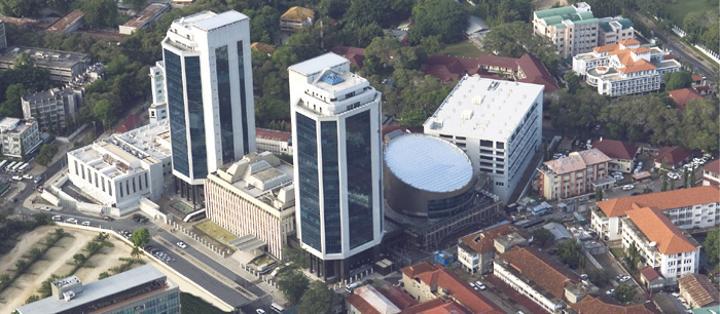Africa-Press – Tanzania. ELECTION periods often bring uncertainty and concern, particularly among members of the business community. Based on my assessment and the latest Bank of Tanzania (BoT) monthly economic reports, I remain confident that despite Tanzania’s slightly underwhelming Q1 2025 performance, the country is on track to achieve its full-year real GDP growth forecast of 6.1 per cent.
My calculations, which consider various economic factors, indicate that growth is expected to moderate slightly to 5.9 per cent through 2026, remaining in line with the 2015–2024 average of 5.8 per cent.
This momentum will be supported by increased mining activity and a more favourable business environment. Risks are likely to lean towards the downside due to potential declines in gold prices and any worsening of the business environment, particularly if political instability arises amid ongoing global geopolitical tensions.
Nevertheless, historical trends suggest that foreign direct investment may have a limited impact, even in the face of escalating political tensions. I anticipate that Tanzania’s real GDP growth will increase from an estimated 5.5 per cent in 2024 to 6.1 per cent by the end of 2025.
On September 3, Tanzania’s National Bureau of Statistics published the Q1 2025 real GDP figures, indicating that the economy expanded by 5.4 per cent year-on-year, consistent with the revised Q4 2024 outcome of 5.2 per cent previously reported.
Although the agriculture sector slowed from 4.2 per cent year-on-year in Q4 to 3.0 per cent in Q1 and tourism declined from 5.7 per cent to 2.3 per cent, this was offset by strong growth in mining and quarrying (8.5 per cent to 16.6 per cent), manufacturing (3.9 per cent to 7.2 per cent) and construction (3.3 per cent to 4.3 per cent).
The print was solid, albeit somewhat lacking in excitement; however, it maintains an overall growth forecast for 2025, as I anticipate that economic activity will improve in the upcoming quarter.
This will be influenced partially by rising gold prices stemming from increased uncertainty regarding US tariffs, which will encourage greater mining production and investment.
Based on the BoT’s monthly economic reports and data from the Tanzania National Bureau of Statistics, I conclude that growth is expected to remain strong at 5.9 per cent in 2026, in line with the 2015–2024 average of 5.8 per cent.
The mining sector is poised to remain a significant contributor to growth through investment and net exports, with my calculations indicating a forecasted contribution of 6.8 per cent and 0.6 per cent to headline growth, respectively.
Following my analysis of the London Metal Exchange, a global marketplace for trading industrial metals and their futures and options contracts, I am confident that gold prices will remain elevated at 3,200 US dollars per ounce in 2026, compared to 3,250 US dollars in 2025.
Additionally, I anticipate that the country’s mining sector will experience real growth of 9.2 per cent. The expansion, supported by rising metal prices, global demand for essential minerals like copper and nickel and the government’s goal to increase mineral exploration coverage from 16 per cent in 2025 to 50 per cent by 2030, will significantly boost net exports and accelerate the mining sector’s growing contribution to GDP.
The ongoing efforts to improve the country’s business environment—through better transport links, a more reliable energy supply and optimised regulatory systems—will, in my opinion, continue to encourage investment and boost the country’s export activities.
My evaluation of both internal and external factors indicates that operational risk has consistently decreased under the administration of Dr Samia Suluhu Hassan. The ongoing expansion of construction, especially in transport infrastructure, will continue to be a significant catalyst for growth.
Many of you will remember that in the June 2025 budget, the Minister for Finance presented a comprehensive pipeline of projects, including the Standard Gauge Railway, increased investment in airports and the national carrier Air Tanzania to enhance service exports, as well as upgrades to major ports like Dar es Salaam to bolster trade exports.
In the meantime, neighbouring countries Malawi and Burundi, aiming to gain access to Tanzania’s ports, are investing in improved transport connections, thereby enhancing regional trade. I believe that the growth of the construction industry will increase from 5.2 per cent in 2025 to 6.6 per cent in 2026.
The Julius Nyerere Hydroelectric Power Project is set to be completed by the end of 2025, which will lead to a reduction in business costs and facilitate ongoing net exports of electricity.
Furthermore, aligned with the 2021-2026 National Development Plan, the government has implemented reforms to legal and taxation frameworks aimed at reducing business costs.
These reforms include the introduction of electronic payment systems, enhancements in regulatory processes and relief on import duties for capital goods.
An initiative to boost selfsufficiency and expand valueadded production is expected to help manage import demand and strengthen export earnings, supported by favourable government policies and a positive outlook for the agricultural sector.
The Finance Act 2025, which introduces VAT exemptions for locally produced fertilisers, textiles from Tanzanian cotton and edible oils from domestic seeds, was well-timed.
In addition, significant customs duty relief will be provided for capital goods. These measures aim to enhance the competitiveness of agriculture and manufacturing while encouraging investment in value-added activities, including metal processing for copper and nickel.
The policies are designed to reduce import dependency and increase export revenues, with a particular focus on supporting domestic industries in key sectors such as food processing and mining.
As noted earlier, risks remain tilted to the downside. My growth outlook, guided by LME trends, hinges on robust gold prices and the country’s increasingly favourable business environment.
A sharp decline in gold prices could constrain export earnings and pressure the currency. Drawing on experience in Sub-Saharan Africa, I note that a country’s freedom ranking has little correlation with foreign direct investment. In my view, 2026 marks a solid starting point, with growth expected to remain strong.
Source: Daily News – Tanzania Standard Newspapers
For More News And Analysis About Tanzania Follow Africa-Press







